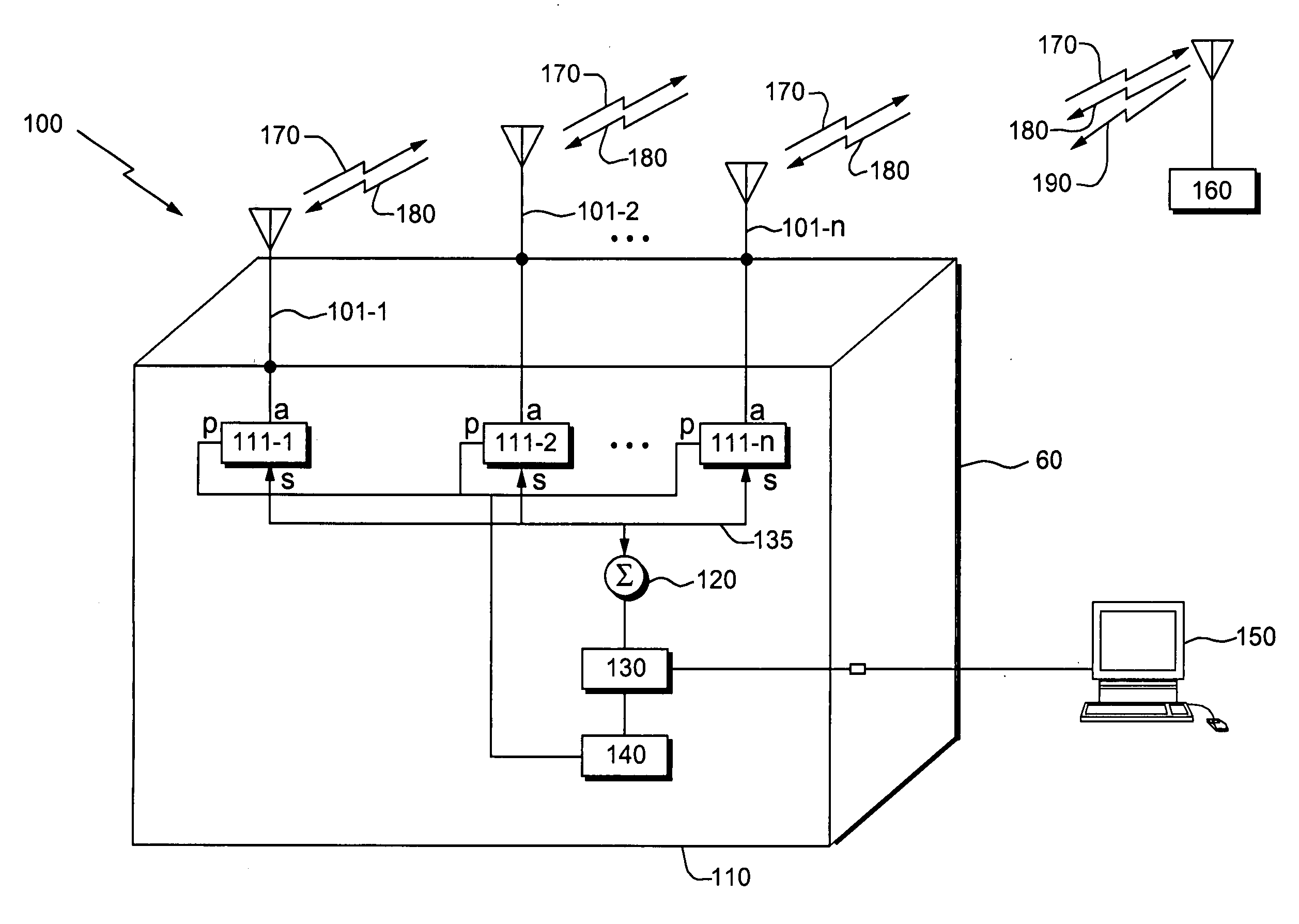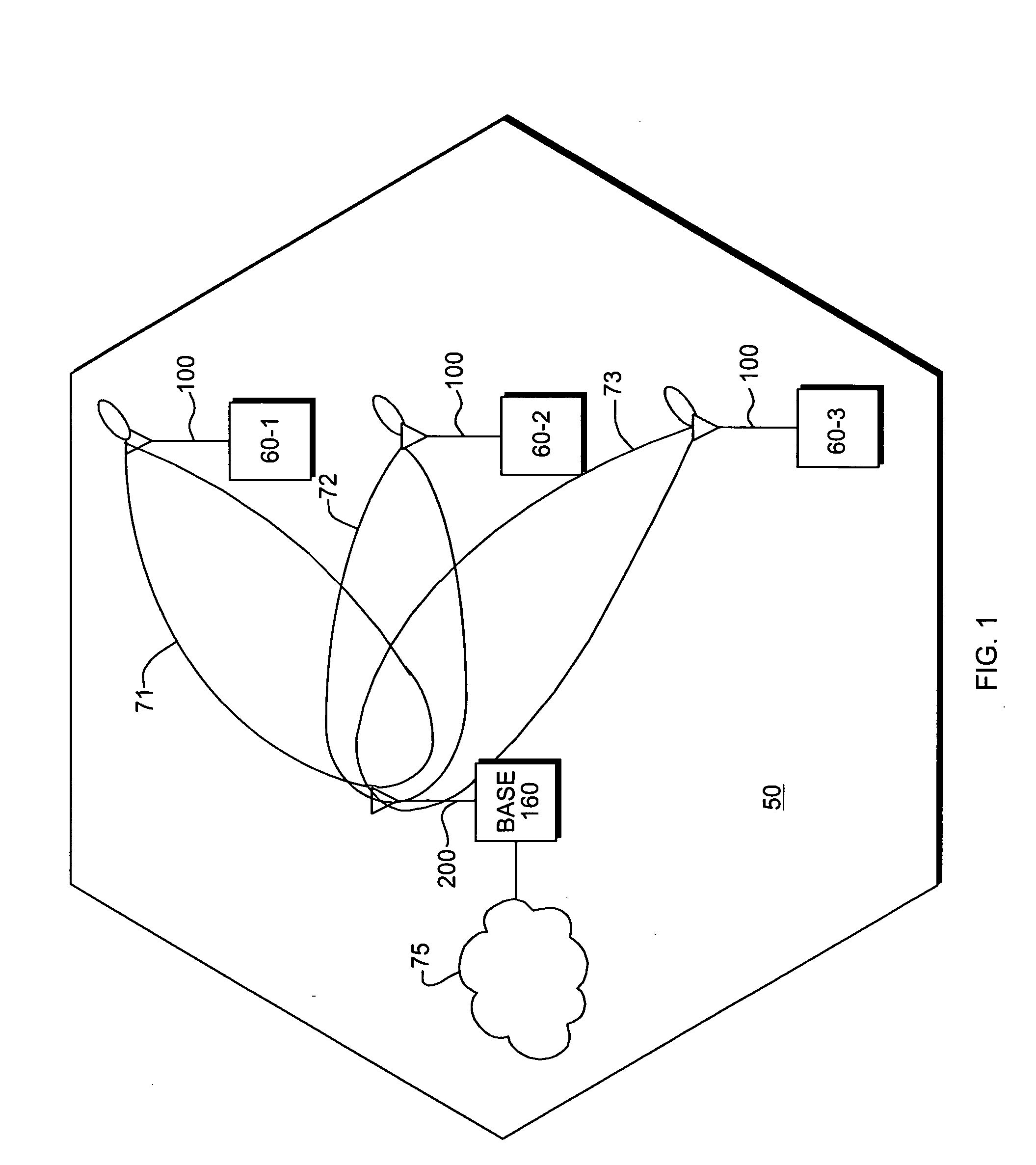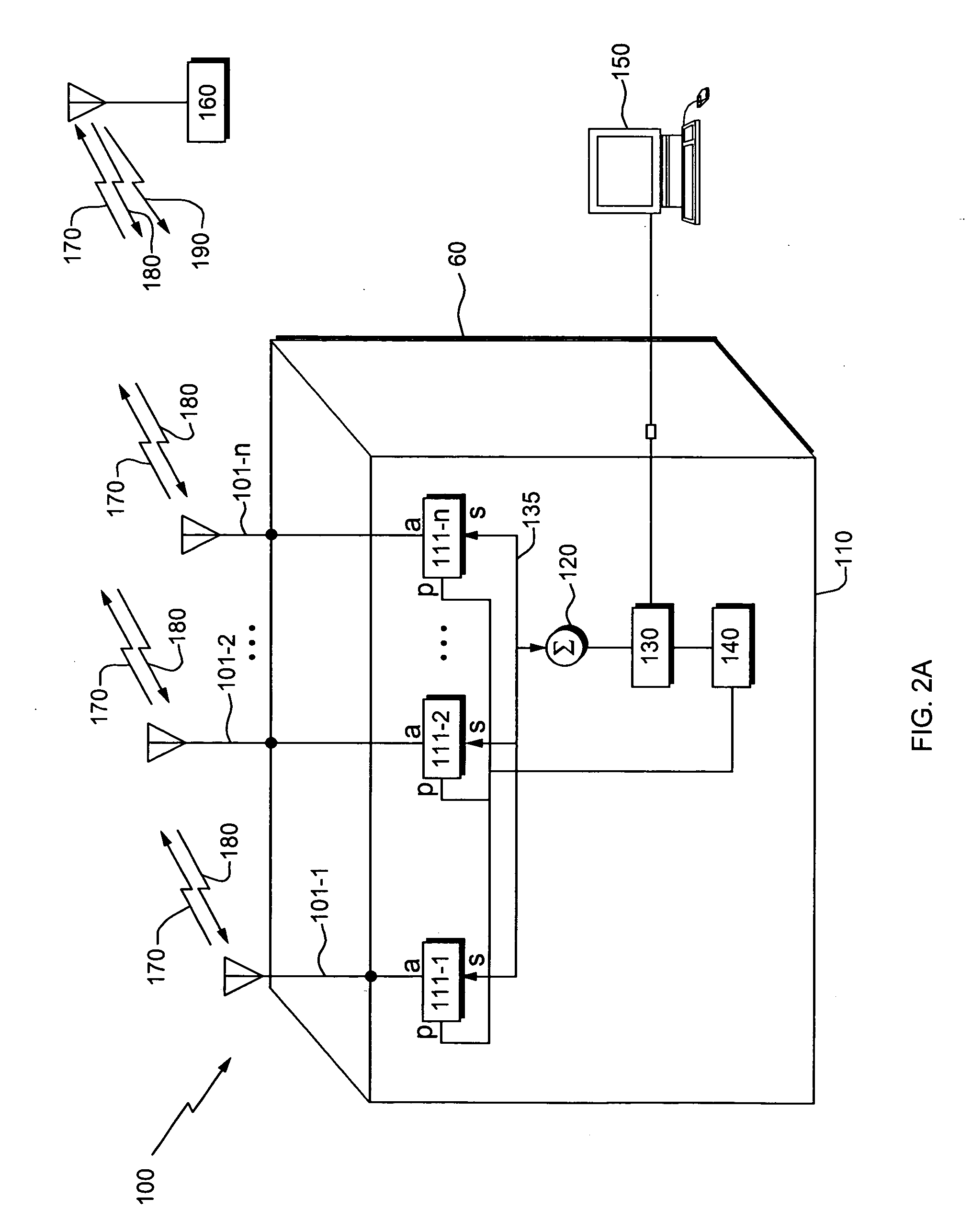Method and apparatus for adapting antenna array using received perdetermined signal
a perdetermined signal and antenna array technology, applied in the field of mobile (or portable) cellular communication systems, can solve the problems of multipath fading, radio frequency signal transmitted from a sender (either a base station or mobile station) may encounter interference, fade or dropout of the received signal,
- Summary
- Abstract
- Description
- Claims
- Application Information
AI Technical Summary
Benefits of technology
Problems solved by technology
Method used
Image
Examples
Embodiment Construction
[0031] A description of preferred embodiments of the invention follows.
[0032]FIG. 1 illustrates a typical wireless communication system such as a CDMA cellular communication system. The cell 50 represents a physical area in which mobile stations 60-1 through 60-3 communicate with a centrally located base station 160. One or more mobile stations 60 are equipped with an antenna 100 configured according to the present invention. The mobile stations 60 are provided with wireless data and / or voice services by the system operator and can connect devices such as, for example, laptop computers, portable computers, personal digital assistants (PDAs) or the like through base station 160 to a network 75, which can be the public switched telephone network (PSTN), a packet switched computer network, such as the Internet, a public data network or a private intranet. The base station 160 can communicate with the network 75 over any number of different available communications protocols such as pr...
PUM
 Login to View More
Login to View More Abstract
Description
Claims
Application Information
 Login to View More
Login to View More - R&D
- Intellectual Property
- Life Sciences
- Materials
- Tech Scout
- Unparalleled Data Quality
- Higher Quality Content
- 60% Fewer Hallucinations
Browse by: Latest US Patents, China's latest patents, Technical Efficacy Thesaurus, Application Domain, Technology Topic, Popular Technical Reports.
© 2025 PatSnap. All rights reserved.Legal|Privacy policy|Modern Slavery Act Transparency Statement|Sitemap|About US| Contact US: help@patsnap.com



